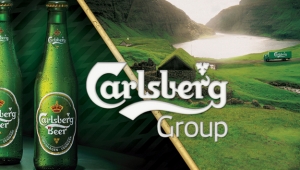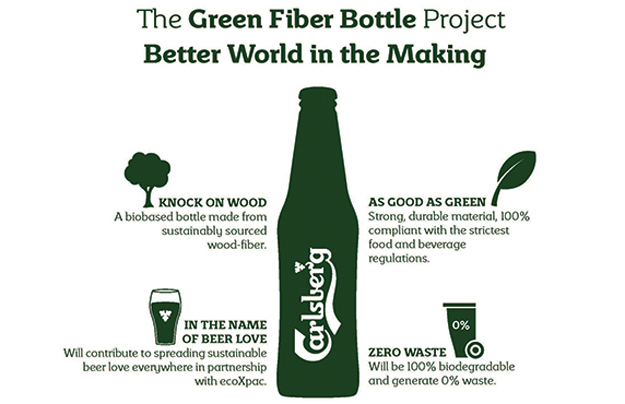A year or so ago the Carlsberg Circular Community (CCC) announced a project to develop next generation packaging materials optimised for recycling and reuse.
The CCC is Carlsberg plus a collection of its global suppliers and they have now announced that they are working on a biodegradable and refillable drinks bottle.

The Green Fibre Bottle, including the cap, is to be made entirely of sustainably sourced wood fibre and will be developed over the next three years. The project is estimated to cost €1.43 million with 60% coming from the Business Innovation Fund in Denmark.
Unlike glass which can be recycled but which can take a million years to eventually biodegrade, the new material will be readily biodegradable once the package reaches end of life. The Green Fibre Bottle reduces Carlsberg’s need to use primary materials in its drinks packaging, because the bottle is made from waste paper pulp.
The project is part of a larger puzzle for Carlsberg, which is actively encouraging upcycling. Upcycling uses waste materials as the input for new stuff, for instance using old tyres for flipflops or waste paper for containers.

Carlsberg’s Green Fibre bottle project
Carlsberg’s partners in the CCC project includes providers of cans, glass bottle coatings and packaging, paperboard multipacks and PET kegs for draught beer. One of them is EcoXpac a developer of customised protective packaging based on biodegradable moulded fibre which is taking the lead in creating the Green Fibre Bottle.
Reducing dependence on primary materials is a core principle for a rising number of consumer product companies. In packaging it means coming up with new ideas and approaches to packaging product development, refurbishment and remanufacturing.
In the print production sector companies such as Ricoh and HP have been doing this for years with hardware and ink cartridges. But this is more about reusing parts that have not reached their end of life. Carlsberg is putting into place a comprehensive programme to use waste and turn it into something useful that will eventually biodegrade, the ultimate cradle-to-grave scenario.
Carlsberg’s journey is to develop and market new products that support a circular, zero-waste economy using its Cradle-to-Cradle business platform within the CCC. There are now eight partners in the group and Carlsberg wants to have fifteen by 2016.
Cradle-to-Cradle – the methodolgy to create a sustainable manufacturing cycle across the process, was created by Professor Michael Braungart and Mr. William McDonough with their companies EPEA Internationale Umweltforschung GmbH and MBDC, LLC
And while there are packaging manufacturers, there are no packaging printers in the group just yet but Carlsberg is open to encouraging them to join. They are looking for partners with a shared vision of eliminating the concept of waste, and who can help Carlsberg to reduce the business’s resource impact.
Carlsberg claim that the Green Fibre Bottle is fully compliant with food and beverage regulations and that it is strong and durable. It’s early days but Carlsberg hopes to have a viable product by 2018.